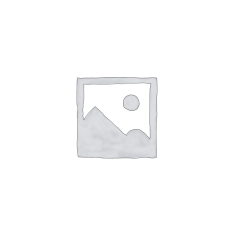Description
TABLE OF CONTENTS
CHAPTER ONE
- Introduction 1
1.2 Statement of the Problem 3
1.3 Aim and Objectives of the Study 4
1.4 Justification of the Study 4
1.5 Scope of the Study 4
1.6 Proposed Methodology 4
CHAPTER TWO
2.0 Literature Review 5
2.1 Nigerian Steel Industry (Historical Development) 5
2.2 Engineering Materials and Properties 7
2.2.1 Cement and Concrete 8
2.2.2 Aggregates and Sand 8
2.2.4 Steel 9
2.2.3 Timber and Plywood 10
2.3 Strength of Materials 10
2.3.1 Stiffness 11
2.3.2 Elasticity 11
2.3.3 Ductility 11
2.3.4 Brittleness 12
2.3.5 Malleability 12
2.3.6 Toughness 12
2.3.7 Resilience 13
2.4 Stress and Strain 13
2.5 Steel Reinforcement 15
25.1 Grades and Strength 16
2.5.2 Types of Reinforcement 18
2.6 Prestressing Steel 19
2.7 Other Tests that can be Carried Out on Steel Reinforcement 20
2.7.1 Impact Test 20
2.7.2 Creep 21
2.7.3 Compression Test 22
2.7.4 Fatigue 23
2.8 Effect of Carbon Content 24
2.9 Effect of Tempering 25
CHAPTER THREE
3.0 Materials and Methodology 26
3.1 Measurement of Steel Bars 26
3.1.1 Micrometer Screw Gauge 26
3.2 Shaping of Specimen 28
3.2.1 Lathe Machine 28
3.3 Tensile Strength Test 28
3.3.1 The Tensometer 28
3.3.2 Principle of Operation 30
3.3.3 General Beam Specification 31
3.3.4 Metric Turned Tensile Test Pieces 32
CHAPTER ONE
1.0 INTRODUCTION
Steel is a man-made material containing 95% of iron. The remaining constituent are small amount of element derived from the raw-material use in the making of the steel, as well as other element added to improve certain characteristics or properties of the product (Marcus, 1964).
Steel reinforcement are used generally in the form of bars of circular cross-section in concrete structure. They are like a skeleton in human body. Plain concrete without steel or any other reinforcement is strong in compression but weak in tension. Steel is one of the best forms of reinforcement to take care of those stresses and to strengthen concrete to bear all kinds of load. In steel reinforcement transverse is very important. They not only take care of structural reinforcement but also help main reinforcement remain in desired positions. They play a very significant role abrupt changes or reversal of stresses like earthquake etc. (www.acclimited.com).
As compare with concrete, steel is a high strength material. The useful strength of ordinary reinforcing steels in tension as well as in compression i.e the mild strength, is of the order of 10 times compression strength. Reinforcement in concrete is used to absorb the tensile forces so that cracking which is inevitable in high strength concrete does not weaken the structure.
However, reinforcement is also used for resisting compression forces primarily where it is desired to reduce the cross- sectional dimensions of compression members, as in the lower floor columns of multi-story buildings. Even if no such necessity exist, a minimum amount of reinforcement is placed in all compression members to safe guard them against small accidental bending moment which might crack or fail an unreinforced member (George, 1979).
The most common types of reinforcing are in the form of round bars. The plain round mild steel bars manufactured in accordance with BS 5950 are required to have a characteristic strength in tension of 250N/mm2 with a minimum elongation of 22% accordingly; they are designed grade 250 by the standard.
Since steel is an engineering material, it is therefore necessary to talk about the strength of this material. The strength of material refers to the materials ability to resist an applied force. A materials strength is a function of engineering processes, and scientist employ a variety of strengthen mechanisms to alter the strength of a materials. The general understanding of the relationship between external forces applied to an engineering structures and resulting action of the members of structure can be achieved by studying the strength of the material (Brunch,1978).
Tensile strength measure the force required to pull a material. Tensile strength of a material is a limit state of tensile stress that lead to tensile fracture in the manner of ductile fracture, or in the manner of brittle fracture (Sudden breaking in two or more pieces with a load stress state).
1.2 STATEMENT OF THE PROBLEM
According to different researches carried out on collapsed buildings, many were based on the qualities of materials used. The materials which include, concrete and reinforcement are basically the composite materials which determine the strength and stability of a structure. Apart from the different mix ratios used in concrete which may not be accurately applied, there is more concern on the sizes and strengths of reinforcement used in the reinforced concrete structure. The reinforcement being the tensile materials in concrete, bears the tensile stresses on the structures and therefore determine the structures ability to withstand tension. The various concrete elements in buildings are column, beams, slabs, and foundation. If the required sizes and number of bars to be used in the structural elements are not used there will be defects on the structural elements.
1.3 AIM AND OBJECTIVES OF THE STUDY
The main aim is to determine the characteristics strength properties of mild steel reinforcement in Ilorin metropolis with the following objectives:
- To verify the various sizes of mild steel available in the market comply with standard specification.
- To make recommendation based on the finding of this project.
1.4 JUSTIFICATION OF THE STUDY
More often in Nigeria we have collapse of buildings several factors can be said to be responsible for a building to collapse. If steel reinforcement is not of standard strength it can cause failure and collapse of the structure. Hence, there is need to verify the strength of the mild steel sold in the market before use in structural work.
1.5 SCOPE OF THE STUDY
This project will cover the laboratory test that will be carried out on various diameter of mild steel specimen to check for their characteristic strength, tensile strength test and physical examination of the diameter of various specimens would be carried out using Vanier caliper.
1.6 PROPOSED METHODOLOGY
The methods used in carrying out this project include procurement of material, preparation of specimens, testing of specimens, analysis of result, conclusion and recommendation.
CHAPTER TWO
2.0 LITERATURE REVIEW
2.1 NIGERIAN STEEL INDUSTRY (HISTORICAL DEVELOPMENT)
Planning for the Nigerian steel industry started around 1958. Many international Organizations and consulting firms had been commissioned at various times to study the feasibility of steel plants under the aegis of the Federal Ministry of Industries In 1971 an extra-ministerial agency was established by Decree to focalize efforts required to actualize a steel plant. The agency was called ‘Nigerian Steel Development Authority” (NSDA). Under this agency organized efforts were intensified in market survey of the steel market in Nigeria; in-depth geological investigation of local raw materials, on aeromagnetic survey for alternative sources of iron-ore through which the Itakpo Iron ore deposit in 1972 was discovered…


Reviews
There are no reviews yet.